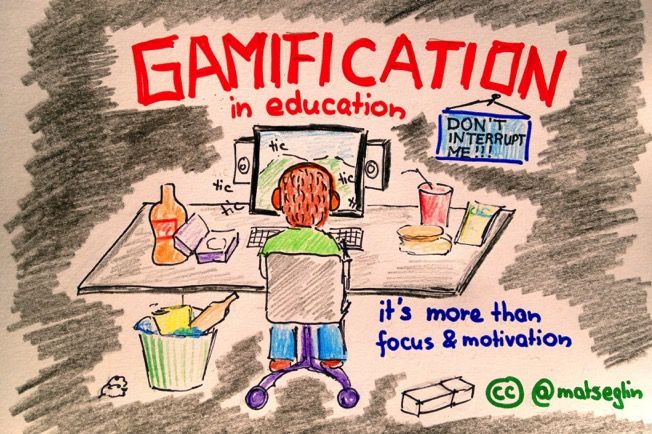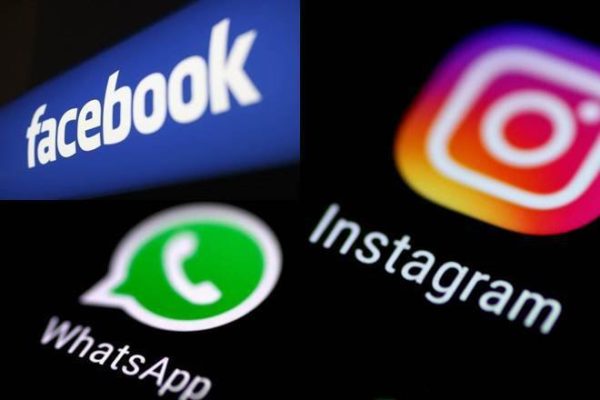The world is making such rapid transformation and so, the new-age classrooms with a common agenda to make learning more meaningful, effective and interactive for the students. To strengthen the foundational pillars of education and add a new dimension in the classroom, teachers are taking advantage of cutting-edge technology i.e. Gamification for Interactive Learning. As of result, the green chalkboards are replaced with digital whiteboards and Chromebooks replacing textbooks. The integration of technology in classrooms is increasing to ensure a conducive learning and teaching atmosphere.
Presently, the world is in the midst of making the massive efforts to revolutionize the education and to keep up with the emerging requirements, much attention is paid to the use of technology. The influx of new classroom technologies simply aims to bring positive changes in the education and improve learning outcomes for most students.
Technology is everywhere in education
In 1922, Thomas Alva Edison declared that the motion pictures are destined to revolutionize the educational system, but it failed to bring any changes. Later, the radio has emerged as a robust technology in the 1930s to beam experts directly into classroom. The idea was to provide maximum learning outputs at lower cost and fewer skilled teachers.
Next comes in the row is educational television somewhere between the 1950’s and 60’s. As an audio-visual medium, the potential of television as an educational tool is widely accepted and as of result, the early 1960s became an era of change. In the 80s, computers gained much hype as the effective revolutionary solutions to solve the education failures and improve the procedural reasoning skills, but the results were obvious.
By now, several initiatives have been taken in support of a common theme of the proposed education revolutions to upgrade the process of teaching and learning. An enriched digital textbook, showing interactive content through a TV, e-learning videos, podcasts, engaging animations, and giant oversized videodiscs are some most notable options. But none of them will be able to bring a significant change in the classroom of tomorrow.
In the 21st century, we have aplenty of things like smartphones, tablets, smartboards, and M.O.O.C.s that are destined to revolutionize the education. Over the past few decades, we have been trying to make the massive changes and that’s not what a revolution looks like.
What could revolutionize interactive education?
Well, referring to the past failures, one thing is very clear i.e. applying technology inside the classroom is not enough. To improve the process of learning, we have to introduce a meaningful kind of thinking that increases engagement and motivation of the learner.
In this context, Gamification can be an effective solution as it promotes “Digital Games-Based Learning” within a non-game context. It became popular in the mid-2000s and the concept had previously been used across the world to incentivized customer behavior. But, Gamification has emerged as a way of engaging lower-achieving students in the 21st century and helps the teachers in bringing the bottom of your class up.
In the 21st century classrooms, the concept of game-based learning is embedded as a viable approach for
(i) Better learning experience with the high level of engagement leading to an improvement in recall and retention abilities
(ii) Better learning environment that facilitates better knowledge retention
(iii) Catalyzing behavioral change.
This way, most game mechanics are making the great contributions towards an interactive process called “adaptive learning” through gamification of education into the classrooms, which is destined to transform the education system, now and in the future. We cannot predict the future of education, it is only with time we will realize the significant improvements.
Debunking Some Popular Gamification & Interactive Education Myths
Almost everything else is accepted in India except the “Digital Games-Based Learning” that are destined to revolutionize the education. Oftentimes, it might seem like a battle lost, but not everyone has given up hope on the concept of game-based learning as a viable approach towards the significant improvements in the 21st century classrooms.
There are still a lot of people making the great contributions to bring major transformation with better engagement level at the learner’s level with the help of engaging mechanism of “Digital Games-Based Learning” within a non-game context.
So here’s debunking some commonly followed Gamification myths:
MYTH 1: ALL THE GAMIFICATION SOLUTIONS AND EDUCATION GAMES ARE THE SAME
Or we should rather say that both are destined to Game-based learning. Gamification solutions are using a few game elements just to teach knowledge and skills to the learners.
It is just a way to encourage them to participate in activities that majorly consist of earning points, overcoming challenges or receiving badges for accomplishing tasks. On the other hand, a learning game is a self-contained unit where a learner is engaged in a definitive start, game play and ending.
Learners already aware of this fact that they are seriously engaged in an entire game from start to finish and at the end there is a “win state.” We have to recognize the in-depth significance of this ‘Gamification’ concept that has exploded in soaring popularity as an effective approach of learning.
It is a powerful educational tool that encourages motivation using game elements, mechanics and game-based thinking to separate fact from fiction in a truly synthesized and participatory way.
MYTH 2: GAMIFICATION IS FOR YOUNG LEARNERS
This is part of a larger myth that anyone of a certain age do not like Gamified solutions. The concept of gamification as a learning strategy has little to do with their age. Unlike playing video games, every learning perspective’s person who is interested in refresh the knowledge will always like gamification efforts.
MYTH 3: GAMIFICATION IS ALL ABOUT FUN AND GAMES
Many people think that there is no science behind Gamification, but the fact is all the Gamification solutions work on two factors – retrieval practice and spaced repetition. These help the learners to increase learning and retention. Spaced repetition give learners the content spaced over time instead of bombarding everything at once. On the other hand, retrieval practice allows learners to recall information and promote long-term retention of knowledge.

Image Credit: Google
MYTH 4: GAMIFICATION MEANS COMPETITION
False. Like any other learning activity, gamified solutions simply engage the participants in early-to-implement zero-sum mechanics like leaderboards and contests without any vibe of competition. Collaborative game-like experiences – rich and varied – are the main priority of such education solutions.
MYTH 5: GAMIFICATION IS ABOUT LEADERBOARDS, POINTS AND BADGES
A well-designed gamification effort is not like games. People don’t get engaged in such solutions for any points or badges, they say ‘YES’ to gamified solutions to overcome obstacles and get deeply engaged in learning. That’s why gamified applications and platforms like Fedda.com are a huge success in the learning environment.
We have to understand that Gamification is not a magic pill, it is just an effective approach using game thinking and mechanics to makes students more motivated, engaged, and able to retain the information they are learning inside/outside the classroom. Particularly, Gamified solutions provide the learners a situation where they have to perform and win something amazing i.e. CONFIDENCE & KNOWLEDGE by answering trivia questions.
Gamification solutions to be effective generally have three key elements: Motivation, Momentum and Meaning. These are the major ingredients that make gamification an important part of learning. And as an effective strategy to revolutionize the current status of education, it is not using superficial game elements, but it simply has extrinsic rewards just to drive short-term motivation.
“Gamification is a new way of learning if implemented well, it can be a winner! It holds tremendous potential to transform the education industry. It’s not always about competing to win, but sharing how you won.”
FURTHER READING
McGonigal, J. (2011). Gaming can make a better world. | TED Talk | Retrieved from HERE
Zicherman. (n.d.). Fun is the Future: Mastering Gamification | Retrieved from HERE
For the latest trending now stories on Education, Upskills, Gamification, Interactive Learning, Career Planning, Certification and Courses, Best Top Universities online reviews, Elearning, Watercooler, and Exam Preparation tips, Don’t Miss to read Insight Glimpse.
